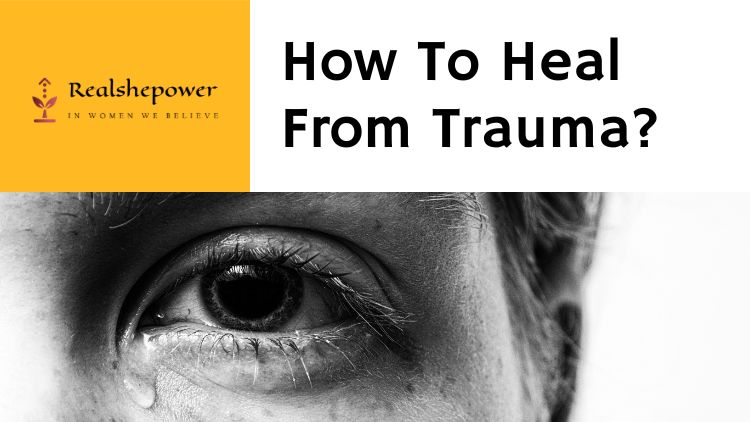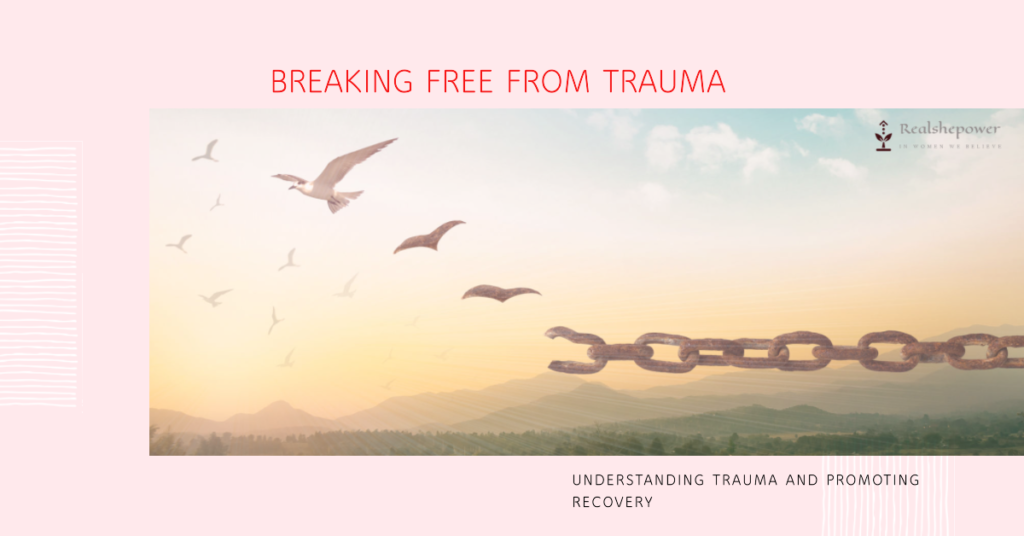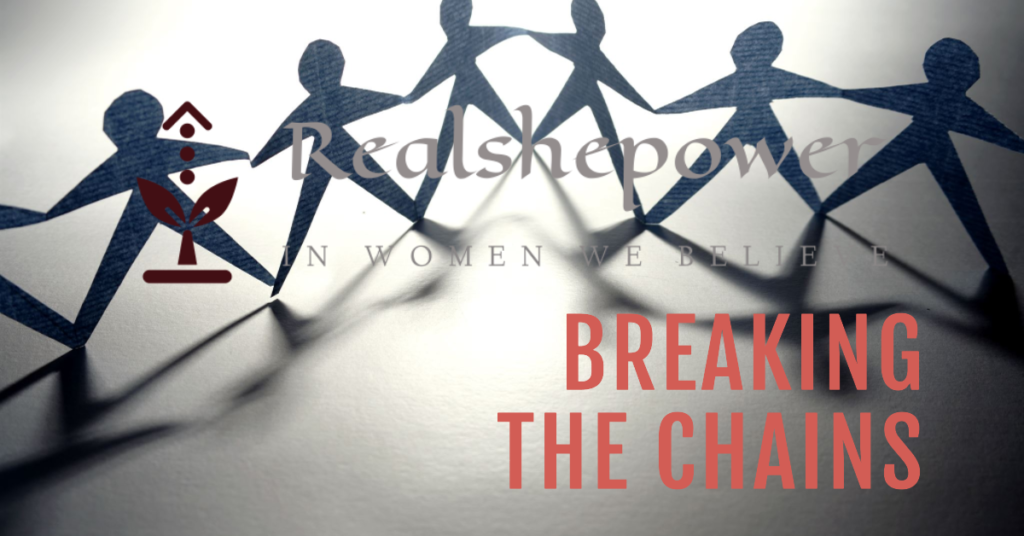How To Heal From Trauma? A Guide to Overcoming the Shadows of the Past


Trauma has a way of gripping us tightly, like a shadow that never seems to fade away. It leaves us feeling lost, broken, and disconnected from ourselves and the world around us. But here’s the thing: healing from trauma is possible. Yes, you read that right. With the right tools, support, and mindset, you can break free from the chains that bind you and step into a future filled with hope and resilience.
In this comprehensive guide, we’ll dive deep into the process of healing from trauma, exploring effective strategies and techniques that can empower you to reclaim your life. So, buckle up and get ready to embark on a transformative journey that will lead you towards inner peace and wholeness.
Table of Contents
Understanding Trauma: Breaking Free from the Chains

Trauma is like a heavy chain that wraps around our hearts and minds, holding us captive in a state of pain and fear. It can be a result of various experiences, such as abuse, neglect, accidents, violence, or even witnessing distressing events. Trauma leaves a profound impact on our physical, emotional, and psychological well-being, often leading to a loss of trust in ourselves, others, and the world around us.
1. Unraveling the Layers of Trauma
Trauma is not a one-size-fits-all experience. It’s essential to recognize and acknowledge the multifaceted nature of trauma and its unique manifestations in each individual’s life. Whether it’s a single traumatic incident or a prolonged period of distress, trauma can disrupt our sense of safety and shatter our belief systems.
To heal from trauma, it’s important to take the time to unravel the layers of your experiences. Reflect on the specific events or circumstances that have caused you pain and identify their impact on your life. By acknowledging the depth and complexity of your trauma, you can begin to reclaim your power and take steps towards healing.
2. Embracing Vulnerability and Self-Compassion
Trauma often leaves us feeling vulnerable and exposed, as if our very core has been shattered. It’s natural to build emotional walls to protect ourselves from further harm. However, true healing begins when we find the courage to embrace vulnerability and open ourselves up to the possibility of healing.
Self-compassion plays a vital role in this process. It involves extending kindness, understanding, and empathy towards ourselves, just as we would towards a dear friend in need. By practicing self-compassion, we create a safe space within ourselves to acknowledge our pain, validate our emotions, and offer ourselves the care and comfort we deserve.
3. Unmasking the Power of Resilience
Resilience is the inner strength that enables us to bounce back from adversity. It is not something we are born with, but rather a skill that can be cultivated and nurtured. Trauma may have shaken your belief in your own resilience, but it’s important to recognize that you possess an inherent capacity to heal and grow.
Unmasking the power of resilience involves shifting your perspective and reframing your experiences. Rather than viewing trauma as a source of weakness, see it as an opportunity for growth and transformation. Recognize the strength you have developed in navigating through difficult times. By embracing your resilience, you can begin to rebuild your life on a foundation of strength and hope.
4. Building a Supportive Network
Healing from trauma is a journey that should not be traveled alone. Building a supportive network of trusted individuals is crucial to the healing process. Reach out to friends, family members, or support groups who can provide a listening ear, understanding, and unconditional support.
It’s important to surround yourself with people who create a safe and nurturing environment, where you can freely express your emotions without judgment. Seek professional help from therapists or counselors who specialize in trauma if needed. These professionals can provide the guidance, tools, and techniques necessary to navigate the intricacies of your healing journey.
Unleashing the Power Within: Reclaiming Your Inner Strength

1. Embrace the Journey of Self-Discovery
Healing from trauma is not just about addressing the wounds of the past; it’s also about rediscovering who you are and what truly matters to you. Engage in activities that allow you to connect with your authentic self, such as journaling, meditation, or spending time in nature. Reflect on your values, aspirations, and passions.
Through self-discovery, you can gain a deeper understanding of your strengths, talents, and desires. It’s a process of reconnecting with your true essence, separate from the trauma that has overshadowed your life. Embrace the journey of self-discovery as a means to reclaim your identity and redefine your path forward.
2. Cultivate Self-Compassion and Forgiveness
Healing from trauma involves releasing the burdens of guilt, shame, and self-blame that often accompany such experiences. Understand that you are not to blame for what happened to you. Take a compassionate approach towards yourself, treating yourself with kindness, understanding, and forgiveness.
Allow yourself to let go of the past and embrace self-forgiveness. It’s a powerful act of liberation that frees you from the shackles of resentment and self-judgment. Remember, forgiveness does not mean condoning or forgetting what happened; it is a gift you give yourself to move forward and heal.
3. Engage in Self-Care Practices
Self-care is an essential component of healing from trauma. It involves prioritizing your physical, emotional, and mental well-being. Engage in activities that bring you joy, relaxation, and peace. This could include regular exercise, practicing mindfulness or meditation, engaging in creative outlets, or spending quality time with loved ones.
Taking care of yourself also means setting boundaries and saying no to things that drain your energy or trigger your trauma. Learn to listen to your needs and honor them without guilt or hesitation. Self-care is a powerful tool that allows you to nurture and replenish yourself as you progress on your healing journey.
Breaking the Chains: Healing Techniques and Strategies

1. Therapy: Unlocking the Doors to Recovery
Therapy provides a supportive and structured space for exploring and processing trauma. Working with a qualified therapist who specializes in trauma can help you uncover the root causes of your pain and develop coping mechanisms to navigate the challenges that arise. Therapeutic approaches such as cognitive-behavioral therapy (CBT), dialectical behavior therapy (DBT), or psychodynamic therapy can be beneficial in addressing trauma-related issues.
Through therapy, you can gain insights, learn effective coping strategies, and develop healthier thought patterns and behaviors. It provides a safe and non-judgmental space for you to heal, grow, and ultimately break free from the chains of trauma.
2. Mindfulness and Meditation: Finding Inner Peace
Mindfulness and meditation practices can be powerful tools for healing from trauma. These practices involve intentionally bringing your attention to the present moment, without judgment or attachment to past or future experiences.
By cultivating mindfulness, you can develop a greater sense of self-awareness and learn to observe your thoughts and emotions without getting entangled in them. This practice allows you to create space between yourself and your trauma, enabling you to respond to triggers and challenges with greater clarity and resilience.
3. Expressive Arts: Giving Voice to Your Pain
Expressive arts therapy offers a creative and non-verbal approach to healing from trauma. Engaging in activities such as painting, drawing, writing, or dancing allows you to express and process your emotions in a safe and supportive manner.
Through art, you can externalize your pain, giving it form and meaning. The process of creation can be cathartic, providing a channel for release, exploration, and self-discovery. Whether it’s through journaling, poetry, or dance, find a medium that resonates with you and allows you to give voice to the depths of your soul.
4. Holistic Self-Healing Practices
In addition to therapy and expressive arts, there are various holistic practices that can complement your healing journey. These may include acupuncture, yoga, energy healing, or aromatherapy. These practices focus on restoring balance to your mind, body, and spirit, promoting overall well-being and facilitating healing.
Remember, healing from trauma is a deeply personal process. It’s important to explore different techniques and find what works best for you. What matters is that you are actively engaged in your healing journey and open to trying new approaches that resonate with your needs and preferences.
FAQs About Healing from Trauma

Q: How long does it take to heal from trauma?
A: Healing from trauma is a deeply personal journey, and there is no one-size-fits-all answer. The timeline for healing varies from person to person. It’s important to be patient with yourself and understand that healing is not a linear process. It may take weeks, months, or even years, but know that progress is possible.
Q: Can I heal from trauma without professional help?
A: While self-help strategies can be beneficial, seeking professional help from therapists or counselors who specialize in trauma can provide invaluable support and guidance. They have the expertise to navigate the complexities of trauma and can provide you with the necessary tools and techniques for healing.
Q: Is it normal to have setbacks during the healing process?
A: Absolutely. Healing from trauma is not a straight path. Setbacks are a natural part of the journey, and it’s important to remember that they do not define your progress. Be gentle with yourself during these times and continue to reach out for support. Healing is not about perfection; it’s about resilience and the courage to keep moving forward.
Q: Is it necessary to confront and relive the traumatic events in order to heal?
A: Confronting and reliving traumatic events is not always necessary for healing. Trauma-focused therapy approaches, such as EMDR or cognitive processing therapy, can help process trauma without requiring you to fully relive the experience. Healing can occur through various techniques that focus on building resilience, addressing symptoms, and promoting overall well-being.
Q: How can I cope with triggers or flashbacks that arise during the healing process?
A: Triggers and flashbacks are common experiences for individuals healing from trauma. It can be helpful to develop grounding techniques, such as deep breathing exercises or focusing on sensory experiences, to bring yourself back to the present moment. Engaging in self-soothing activities, like listening to calming music or using aromatherapy, can also help reduce distress during triggers or flashbacks.
Q: Is it normal to feel stuck or overwhelmed during the healing journey?
A: Feeling stuck or overwhelmed is a common experience when healing from trauma. The healing process can be challenging, and it’s normal to encounter obstacles along the way. It’s important to practice self-compassion and patience with yourself during these times. Seeking support from a therapist or support group can provide guidance and help you navigate through these difficult moments.
Q: Can I heal from multiple traumatic experiences at the same time?
A: Healing from multiple traumatic experiences is possible, although it may require a phased approach or addressing one trauma at a time. It’s important to prioritize self-care and emotional well-being throughout the healing journey. Working with a skilled therapist can help you develop a personalized plan for addressing and processing multiple traumas, ensuring that you have the necessary support throughout the process.
Remember, healing is a gradual and nonlinear process. Be kind to yourself, celebrate the progress you make, and seek professional help when needed. You deserve healing and the opportunity to live a fulfilling life beyond the shadows of trauma.
Embracing a Future Filled with Hope
As we come to the end of this guide, remember that healing from trauma is possible. It may be a challenging and at times, a daunting journey, but with dedication, self-compassion, and the right support, you can emerge from the shadows of the past and step into a brighter future. You are not defined by your trauma, but rather by your strength and resilience.
So, take the first step today. Embrace the power within you. Seek support. Engage in healing techniques. And remember, you are worthy of healing, and you have the capacity to create a life filled with joy, peace, and purpose. Trust the process, believe in yourself, and know that you are never alone on this journey. How To Heal From Trauma? It begins with you, right now.
